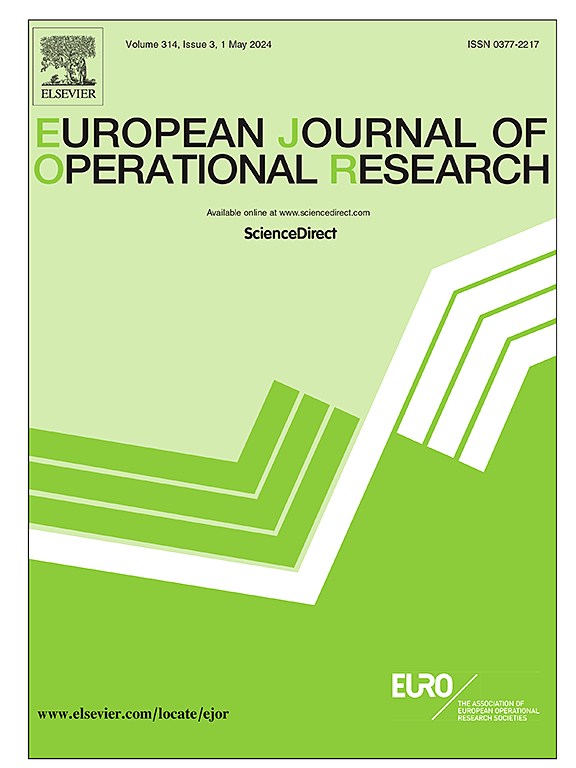A simplicial homology approach for assessing and rectifying coverage of sensor networks for improved crop management
IF 6
2区 管理学
Q1 OPERATIONS RESEARCH & MANAGEMENT SCIENCE
引用次数: 0
Abstract
This study presents a mathematical framework and solution approach aimed at enhancing wireless sensor network coverage, specifically focusing on agricultural applications. Sensor networks in precision agriculture can efficiently monitor environmental parameters and control factors affecting crop yield and quality. However, challenges such as sensor failures and communication disruptions due to vegetation interference can hinder achieving complete coverage, leading to reduced productivity. It is therefore necessary to effectively identify, locate, and rectify sensor coverage holes, i.e., areas lacking sensor coverage. To address this, we utilize principles from graph theory, algebraic topology and optimization. Specifically, sensor networks are modeled as Rips complexes, while concepts from simplicial homology and linear programming are used to verify the presence and identify the locations of coverage holes, respectively. By utilizing constructs from abstract simplicial complexes, we then introduce a hole removal heuristic that identifies a minimal number of sensors, along with their locations, that need to be added to the network to achieve complete coverage. It is also shown that the presented framework is adaptable to hybrid sensor networks, where autonomous agents can serve as mobile sensors to remove coverage holes. The approach is validated using extensive numerical simulations for a small farm of 62 acres with 400 sensors and shown that complete sensor coverage can be obtained for network topologies with a varying number and sizes of coverage holes. Key observations pertaining to the performance of the proposed method are drawn from the simulation results.求助全文
约1分钟内获得全文
求助全文
来源期刊

European Journal of Operational Research
管理科学-运筹学与管理科学
CiteScore
11.90
自引率
9.40%
发文量
786
审稿时长
8.2 months
期刊介绍:
The European Journal of Operational Research (EJOR) publishes high quality, original papers that contribute to the methodology of operational research (OR) and to the practice of decision making.
 求助内容:
求助内容: 应助结果提醒方式:
应助结果提醒方式:


